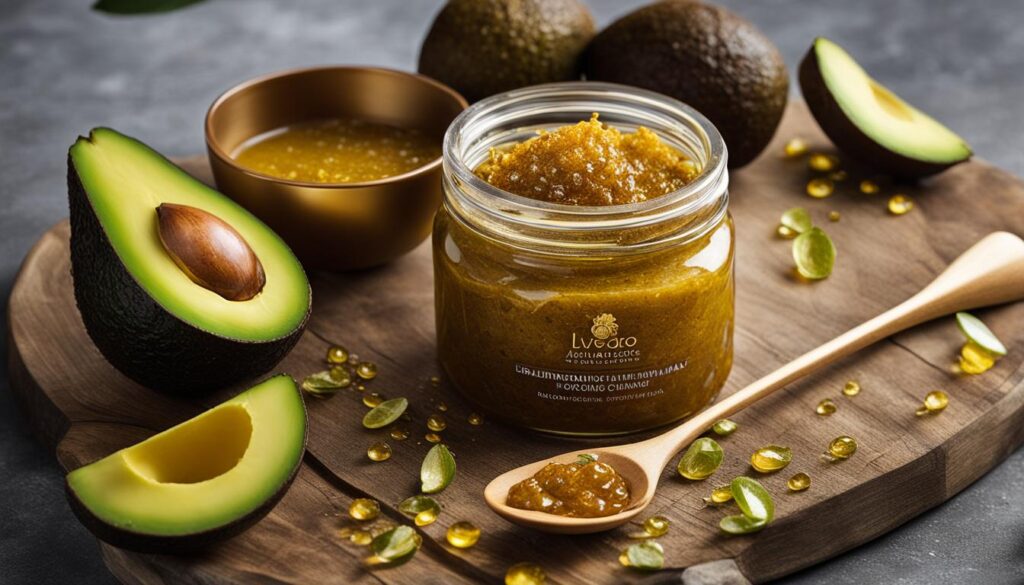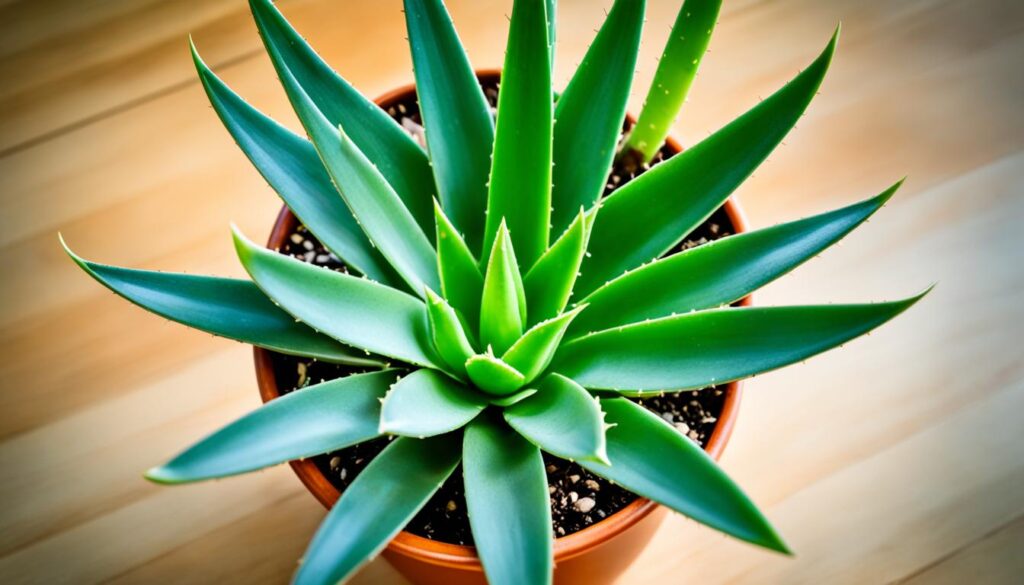Welcome to our comprehensive guide on strengthening weak hair roots naturally. If you’re struggling with weak hair roots, you’re not alone. Many women face this common issue, which can lead to hair loss and affect overall hair health. This article will explore the causes of weak hair roots and their impact on your hair’s strength. We will also discuss natural remedies and tips for improving scalp health and promoting solid roots. Whether you’re looking for hair loss treatments, healthy scalp tips, or natural remedies for weak hair, we have you covered.
Strong roots are essential for healthy hair, providing a solid foundation for growth. Various factors, including hormonal imbalances, nutritional deficiencies, and excessive hair styling, can cause weak hair roots. Understanding the root causes of weak hair roots is the first step toward finding practical solutions.
We will also explore the connection between scalp health and hair root strength. A healthy scalp provides the ideal environment for hair growth and ensures that your roots receive the necessary nutrients and oxygen. By improving scalp health, you can enhance the strength of your hair roots.
The following sections introduce you to natural remedies for weak hair, including DIY hair masks and scalp massage techniques. We will also discuss the benefits of herbal remedies, essential oils, and proper nutrition for maintaining solid roots. Additionally, we will guide you in identifying and treating early signs of damage and establishing a holistic hair care routine.
Whether you’re looking to prevent further damage or enhance the resilience of your hair roots, this article is designed to provide valuable insights and practical tips. Let’s dive in and discover how you can naturally strengthen your weak hair roots and achieve healthier, more vibrant hair.
Understanding Weak Hair Roots: Causes and Impacts
This section will explore the common causes of weak hair roots in women and their impact on overall hair health. Understanding the underlying factors contributing to weak hair roots is essential for effectively addressing and preventing hair issues. By gaining insights into the causes and impacts of weak hair roots, women can take proactive steps to improve the strength and resilience of their hair.
Common Causes Behind Weak Hair Roots in Women
Weak hair roots in women can be attributed to several factors:
- Hormonal imbalances: Fluctuations in hormones, such as during pregnancy or menopause, can disrupt the hair growth cycle and weaken the roots.
- Nutritional deficiencies: Inadequate intake of essential nutrients like vitamins, minerals, and proteins can impact hair root health.
- Excessive hairstyling: Overuse of heat styling tools, chemical treatments, and tight hairstyles can cause damage to the hair follicles and weaken the roots.
- Stress: Chronic stress can disrupt the hair growth cycle and weaken hair roots.
By addressing these common causes, women can effectively prevent and combat weak hair roots, promoting healthier and stronger hair.
How Weak Hair Roots Affect Overall Hair Health
Weak hair roots can have a significant impact on the overall health and appearance of the hair. Some of the effects of weak hair roots include:
- Hair thinning: When the roots are weak, the hair strands become thinner, leading to a noticeable reduction in hair volume.
- Breakage: Weak roots make the hair more prone to breakage, resulting in shorter and frayed strands.
- Hair loss: If left untreated, weak hair roots can eventually cause excessive hair loss and thinning patches on the scalp.
- Lack of vitality: Weak hair roots can make the hair look dull, lifeless, and lacking in vitality.
It is crucial to address weak hair roots to maintain a healthy and vibrant-looking mane. By understanding the causes and impacts of weak hair roots, women can take the necessary steps to promote root strength and overall hair health.

The Connection Between Scalp Health and Hair Root Strength
The health of your scalp is directly linked to the strength and vitality of your hair roots. A healthy scalp provides the essential environment for hair growth and ensures the hair roots receive the nutrients and oxygen for optimal strength. On the other hand, an unhealthy scalp can lead to weak, brittle roots and various scalp conditions.
Essential Nutrients for a Healthy Scalp
To maintain a healthy scalp and promote strong hair roots, ensuring you are getting the proper nutrients is important. Here are some essential nutrients that play a crucial role in scalp health:
- Vitamin A: Supports sebum production, the natural oil that moisturizes the scalp. Good sources of vitamin A include carrots, sweet potatoes, and spinach.
- Vitamin E: Acts as an antioxidant, protecting the scalp from free radicals. Nuts, seeds, and leafy greens are rich in vitamin E.
- Biotin: Promotes healthy cell growth and production, essential for a well-nourished scalp. Eggs, salmon, and avocados are good sources of biotin.
- Zinc: Supports hair cell growth and repair, ensuring a healthy scalp. Oysters, beef, and pumpkin seeds are excellent sources of zinc.
- Omega-3 fatty acids: Reduce inflammation and nourish the scalp. They are found in fatty fish like salmon, walnuts, and flaxseeds.

Signs of an Unhealthy Scalp
Recognizing the signs of an unhealthy scalp is crucial for maintaining hair root strength. Here are some common indicators that your scalp may require care:
- Itchiness: Persistent itching of the scalp can be a sign of dryness, dandruff, or an infection.
- Dandruff: A flaky, itchy scalp accompanied by white or yellow flakes on the hair and clothing may indicate dandruff.
- Excessive oiliness: A greasy scalp often leads to clogged hair follicles and can contribute to weak roots and hair loss.
- Irritation: Redness, tenderness, or soreness of the scalp can be a sign of inflammation or an underlying condition.
- Hair loss: Thinning hair, excessive shedding, or bald patches may suggest the scalp is not providing the optimal environment for healthy hair growth.
Paying attention to these signs and taking proactive steps to improve your scalp health can help maintain strong hair roots and promote overall health.
Natural Remedies for Weak Hair: A Holistic Approach
Adopting a holistic approach that considers various aspects of your lifestyle and well-being is essential to strengthening weak hair roots naturally. Incorporating natural remedies into your hair care routine can promote hair root resilience and improve overall hair health.
One of the first steps towards strengthening weak hair roots is to make necessary lifestyle changes. This includes practicing good hair hygiene using gentle sulfate-free shampoos and avoiding excessive heat styling or chemical treatments that can further weaken the roots. Additionally, managing stress levels through activities like meditation or yoga can positively impact hair health.
Herbal supplements can also be effective in promoting root strength. Certain herbs, such as saw palmetto and horsetail, have been traditionally used to support hair growth and strengthen the roots. However, consulting a healthcare professional before adding supplements to your routine is essential.
Furthermore, proper nutrition plays a crucial role in maintaining strong hair roots. A diet rich in vitamins, minerals, and essential fatty acids can nourish the hair follicles from within. Foods like salmon, avocados, nuts, and leafy greens promote healthy hair growth and strengthen weak roots.
In addition to lifestyle changes and nutritional support, regular scalp massages can improve blood circulation to the hair follicles and strengthen the roots. Massage your scalp gently using your fingertips in circular motions to stimulate the hair follicles and promote growth.
To get started with natural remedies for weak hair, try incorporating the following into your routine:
- Practice good hair hygiene with sulfate-free shampoos
- Avoid excessive heat styling and chemical treatments
- Manage stress through meditation or yoga
- Consider herbal supplements like saw palmetto or horsetail
- Incorporate foods rich in vitamins, minerals, and essential fatty acids into your diet
- Perform regular scalp massages to improve blood circulation
By adopting a holistic approach that combines these natural remedies, you can strengthen weak hair roots and promote overall hair health. Remember, consistency is vital when seeing results, so be patient and make these practices a part of your regular hair care routine.

DIY Hair Masks: Strengthen Hair Roots with Homemade Solutions
This section will provide recipes and instructions for DIY hair masks that can strengthen hair roots and nourish the scalp. These homemade solutions will incorporate natural ingredients known for their beneficial properties, such as aloe vera, coconut oil, and avocado.
Homemade hair masks are a cost-effective and convenient way to improve the strength and health of your hair roots. Utilizing ingredients readily available in your kitchen can create personalized treatments tailored to your needs.
One famous DIY hair mask for strengthening hair roots is the Aloe Vera and Coconut Oil Mask. Aloe vera is known for its soothing and moisturizing properties, while coconut oil helps to nourish and protect the hair. To create this mask:
- Mix two tablespoons of fresh aloe vera gel with one tablespoon of coconut oil in a bowl.
- Mix the ingredients until well blended.
- Apply the mixture to your scalp and hair roots, massaging gently.
- Leave the mask on for 30 minutes to an hour, allowing the nutrients to penetrate the roots.
- Rinse thoroughly with lukewarm water and shampoo as usual.
Another effective DIY hair mask is the Avocado and Olive Oil Mask. Avocado is rich in vitamins and minerals, which help to strengthen the hair roots, while olive oil provides deep conditioning and adds moisture. To create this mask:
- Mash half an avocado in a bowl.
- Add two tablespoons of olive oil and mix well.
- Apply the mask to your scalp and hair roots, ensuring even coverage.
- Leave the mask on for 30 minutes to an hour for maximum benefits.
- Rinse thoroughly and shampoo as usual.
Remember to perform a patch test before applying any DIY hair mask to ensure you are not allergic to any ingredients. Additionally, it is recommended to use these masks once a week or as needed, depending on the condition of your hair roots.

“These DIY hair masks are a natural and effective way to strengthen hair roots and improve overall hair health.” – Beauty Expert
Incorporating these homemade solutions into your hair care routine can nourish your scalp and promote strong hair roots. Experiment with different ingredients and find what works best for you, enjoying the benefits of healthier, more resilient hair.
Revitalize Your Scalp: Massage Techniques for Improved Blood Flow
Scalp massages are a rejuvenating technique that can significantly benefit hair root strength. By improving blood circulation to the scalp, these massages stimulate the hair follicles and promote healthy growth. Additionally, scalp massages can help alleviate stress and tension, contributing to weakened hair roots.

Benefits of Scalp Massages for Hair Root Strength
There are several benefits to incorporating scalp massages into your hair care routine:
- Enhanced blood circulation: Scalp massages increase blood flow to the hair follicles, ensuring a rich supply of oxygen and nutrients. This promotes hair root strength and stimulates hair growth.
- Stress relief: Scalp massages can help reduce stress and tension, which can contribute to weakened hair roots. This relaxation technique not only benefits your hair but also promotes overall well-being.
- Improved hair texture: Regular scalp massages can enhance the texture and shine of your hair. Massages can minimize dryness, flakiness, and itchiness by promoting a healthy scalp environment.
- Increased product absorption: Massaging the scalp before applying hair care products can improve absorption. This ensures that essential nutrients and treatments effectively reach the hair roots and provide maximum benefits.
How to Perform a Scalp Massage at Home
You can efficiently perform a scalp massage at home using the following steps:
- Prepare: Choose a comfortable and quiet space where you can relax. Apply a small amount of natural oil, such as coconut or jojoba oil, to your fingertips for lubrication.
- Section your hair: Use a comb to section your hair from the front to the back of your head. This will help you focus on massaging one section at a time.
- Apply gentle pressure: Place your fingertips on the scalp, applying gentle pressure in circular motions. Start from the hairline and gradually move towards the center of your head.
- Cover the entire scalp: Repeat the circular motions, covering the whole scalp. Pay special attention to areas where you feel tension or soreness.
- Massage for 5-10 minutes: Continue massaging your scalp for 5-10 minutes. Take slow, deep breaths to enhance relaxation and stress relief.
- Rinse or leave-in: Depending on your preference, you can rinse the oil or leave it overnight for added nourishment.
A scalp massage a few times a week can help strengthen hair roots and promote overall scalp health. Consider a healthcare professional before trying new techniques, especially if you have any underlying scalp or medical conditions.
Herbal Helpers: Plants and Herbs That Promote Strong Roots for Hair
When strengthening weak hair roots, herbal remedies can offer practical and natural solutions. Harnessing the power of plants and herbs can provide essential nutrients and promote optimal scalp health, ultimately enhancing the strength and resilience of your hair roots.
Using Aloe Vera for Hair Root Reinforcement

Aloe vera is a versatile plant known for its numerous health benefits, including its ability to reinforce hair roots. Rich in vitamins, minerals, and amino acids, aloe vera nourishes the scalp and stimulates hair growth. Its anti-inflammatory properties also aid in reducing scalp irritation and soothing any redness or itchiness.
To use aloe vera for hair root reinforcement, follow these steps:
- Extract the gel from a fresh aloe vera leaf.
- Apply the gel directly to your scalp and gently massage it in.
- Leave the gel on for 30 minutes to an hour.
- Rinse your hair thoroughly with lukewarm water.
Incorporating aloe vera into your hair care routine can help strengthen weak roots and promote healthy hair growth.
Herbal Rinses with Rosemary and Nettle for Root Care
In addition to aloe vera, herbal rinses with rosemary and Nettle are excellent choices for root care. Rosemary has been used for centuries to improve circulation, stimulate hair follicles, and promote growth. On the other hand, Nettle is rich in vitamins and minerals that nourish the scalp and strengthen the hair roots.
To create an herbal rinse with rosemary and Nettle, follow these steps:
- Boil water and add dried rosemary and nettle leaves.
- Let the mixture steep for 15-20 minutes.
- Strain the liquid and allow it to cool.
- After shampooing, pour the herbal rinse onto your scalp and hair.
- Gently massage the mixture into your scalp for a few minutes.
- Rinse your hair with cool water.
Regular herbal rinses can nourish your hair roots, strengthen weak follicles, and improve overall hair health.
Incorporating aloe vera and herbal rinses into your hair care routine can help reinforce the strength of your hair roots and promote healthier, more resilient hair. Combine these herbal remedies with the other natural methods explored in this comprehensive guide to enhance root resilience and achieve optimal hair health.
Essential Oils: Natural Elixirs for a Healthy Scalp and Strong Hair Roots
Essential oils are a natural and effective solution to promote a healthy scalp and strong hair roots. These concentrated plant extracts offer many benefits, from nourishing the scalp to stimulating hair growth. But with so many options available, choosing suitable essential oils for scalp application is crucial.
Choosing the Right Essential Oils for Scalp Application
It’s vital to select oils that address your specific needs to harness the power of essential oils for your scalp. Different oils have different properties and benefits, so consider the following factors when choosing essential oils for your hair:
- Skin Type: Consider whether your scalp is oily, dry, or sensitive. Some oils, like tea tree and lavender, are suitable for all skin types. In contrast, others, like rosemary and peppermint, are more stimulating and may be better suited for oily or congested scalps.
- Concerns: Identify the issues you want to address, such as dandruff, itchiness, or hair loss. Certain oils, like cedarwood and clary sage, have soothing properties that can alleviate these concerns.
- Scent Preference: Since essential oils are highly aromatic, consider your scent preferences. Enjoying the scent of the oil will enhance your overall experience and make your hair care routine more enjoyable.
Once you’ve determined your needs and preferences, you can choose the essential oils that align with your goals. Experiment with different combinations to find the ones that work best for you.
Topical Application vs. Aromatic Use in Hair Care
While essential oils can be used topically and aromatically, it’s important to understand the difference between the two methods when incorporating them into your hair care routine.
Topical application involves directly applying essential oils to the scalp or hair. This method lets the oils penetrate the scalp and benefit the hair follicles. You can dilute essential oils with carrier oils, such as coconut or jojoba oil, to ensure safe application and avoid sensitivity reactions.
Aromatic use involves diffusing essential oils into the air or inhaling them directly. This method can promote relaxation and provide a pleasant scent in your space. However, it may not have the same direct benefit for your scalp and hair roots as a topical application.
Both methods have advantages, so you can choose the one that suits your preferences and needs. Some people prefer combining topical application and aromatic use for a comprehensive approach to hair care.

Before incorporating essential oils into your hair care routine, perform a patch test to check for allergic reactions or sensitivities. Following the recommended dilution ratios and guidelines from reputable sources is crucial.
By choosing suitable essential oils and utilizing them correctly, you can harness their natural elixirs to achieve a healthy scalp and strong roots, promoting overall hair health.
Weak Hair Roots: Identifying and Treating Early Signs of Damage
Early detection and timely intervention are crucial when addressing weak hair roots. By recognizing the warning signs and taking preventive measures, you can promote root resilience and ensure the overall health of your hair. Here are some key points to consider:
Recognizing the Warning Signs of Weak Roots
Identifying the early signs of weak hair roots is essential for appropriate action. Look out for the following indicators:
- Excessive shedding: If you notice an increase in hair fall, it may be a sign of weak roots.
- Scalp sensitivity: Sensitivity or tenderness in the scalp can indicate root damage.
- Stunted hair growth: If it seems slower than usual, it could be related to weak roots.
Paying close attention to these warning signs can quickly catch root damage and initiate appropriate treatment.
Preventive Measures to Avoid Further Damage
Preventing further damage to weak hair roots is crucial for promoting root resilience. Here are some preventive measures you can take:
- Gentle hair care: Avoid excessive brushing, harsh styling, and tight hairstyles that can strain the roots.
- Healthy scalp care: Maintain a clean and balanced scalp using a gentle shampoo and conditioner suitable for your hair type.
- Protective styling: Minimize heat styling tools and use heat protectants when necessary. Consider protective hairstyles that reduce tension on the roots.
- Nutrient-rich diet: Ensure your diet includes essential vitamins and minerals for healthy hair, such as biotin, vitamin E, and iron.
- Stress management: Stress can contribute to hair loss, so practice stress-reduction techniques like meditation or yoga.
By implementing these preventive measures, you can maintain the strength and resilience of your hair roots.

| Signs of Weak Roots | Preventive Measures |
|---|---|
| Excessive hair shedding | Gentle hair care, nutrient-rich diet |
| Scalp sensitivity | Healthy scalp care, stress management |
| Stunted hair growth | Protective styling, nutrient-rich diet |
Healthy Eating for Healthy Hair: Nutritional Support for Strong Roots
Nutrition plays a crucial role in maintaining strong hair roots. A well-balanced diet rich in vitamins, minerals, and nutrients is essential for promoting optimal hair health. You can support solid roots and healthy hair by incorporating the right foods into your diet.
Essential Vitamins and Minerals for Hair Root Strength
Several vitamins and minerals contribute to hair root strength and overall hair health. Including these nutrients in your daily diet can help nourish your hair follicles and promote strong roots. Some essential vitamins and minerals for hair root strength include:
- Vitamin A: Found in foods like sweet potatoes, spinach, and carrots, vitamin A supports the production of sebum, an oily substance that moisturizes the scalp and keeps hair roots healthy.
- Vitamin E: Nuts, seeds, and leafy greens are excellent sources of vitamin E, which helps improve blood circulation to the scalp and promotes hair follicle health.
- Iron: Red meat, lentils, and spinach are rich in iron, a mineral that plays a crucial role in delivering oxygen to the hair roots and promoting hair growth.
- Zinc: Foods like oysters, pumpkin seeds, and beef contain zinc, which supports the hair follicles and helps prevent hair loss by strengthening the hair shaft.
- Biotin: Biotin, also known as vitamin B7, can be found in foods like eggs, avocados, and nuts. It supports the production of keratin, a protein that strengthens the hair strands and promotes root health.
Best Foods to Include in Your Diet for Healthy Hair
To ensure optimal hair health and strong roots, it is essential to include a variety of nutrient-rich foods in your diet. Incorporate the following foods into your daily meals to support healthy hair:
- Fatty fish like salmon, mackerel, and sardines are rich in omega-3 fatty acids that nourish the hair follicles.
- Leafy green vegetables, such as spinach, kale, and Swiss chard, provide essential vitamins and minerals for hair health.
- Nuts and seeds, including almonds, walnuts, and flaxseeds, contain nutrients like vitamin E, biotin, and omega-3 fatty acids.
- Lean proteins like chicken, turkey, and eggs are excellent sources of essential amino acids for hair growth and strength.
- Colorful fruits and vegetables, such as berries, citrus fruits, and bell peppers, are rich in antioxidants that protect hair follicles from oxidative stress.
- Whole grains like quinoa, oats, and brown rice provide biotin, zinc, and iron for healthy hair roots.
Incorporating these nutritious foods into your diet gives your hair roots the vitamins, minerals, and essential nutrients they need to thrive. Remember to maintain a well-balanced diet and stay hydrated for overall hair health.
Daily Hair Care Routine: Best Practices for Women with Weak Roots
A consistent and effective hair care routine is essential for women with weak roots. Following these best practices and tips for daily hair care can minimize damage and strengthen your hair roots.
1. Proper Cleansing:
- Use a sulfate-free shampoo that is gentle on your scalp and hair.
- Massage your scalp gently while shampooing to improve blood circulation.
- Rinse thoroughly to remove all traces of shampoo.
2. Conditioning:
- Apply a moisturizing conditioner to the lengths and ends of your hair, avoiding the roots.
- Leave the conditioner on for a few minutes before rinsing it out thoroughly.
3. Protecting and Styling:
- Avoid heat-styling tools as much as possible to prevent further damage to weak roots.
- If you use heat, apply a heat protectant spray to minimize the impact.
- Avoid tight hairstyles like ponytails or buns that pull on the roots.
- Opt for loose hairstyles or use gentle hair accessories like scrunchies.
4. Nourishing the Scalp:
- Massage your scalp regularly to promote blood circulation and strengthen the hair roots.
- Natural oils like coconut or argan oil nourish the scalp and roots.
5. Be Gentle:
- Avoid vigorous towel drying and gently squeeze out excess water from your hair.
- Use a wide-toothed comb or a detangling brush to minimize breakage when brushing your hair.
Consistency is key in a hair care routine for weak roots. Stick to these best practices and tailor them to your hair needs for optimal results.
Avoiding Harmful Practices: What to Steer Clear of for Root Resilience
To promote root resilience and maintain overall hair health, avoiding certain harmful practices that can weaken the roots and cause damage is essential. By steering clear of these practices, you can ensure that your hair roots remain strong and resilient.
Excessive Heat Styling:
Excessive heat on your hair can lead to dryness, breakage, and weakened roots. Avoid using hot styling tools such as straighteners, curling irons, and blow dryers in high-heat settings. Opt for heat protectant sprays and lower heat settings to minimize damage to your hair roots.
Wearing tight hairstyles such as ponytails, braids, and buns can put excessive tension on your hair roots, leading to breakage and weak roots. Opt for looser styles or use hair accessories that distribute the tension evenly, such as scrunchies or hair ties made from fabric instead of elastic.
Chemical Treatments:
Chemical treatments, such as perming, relaxing, or coloring your hair, can cause damage to the hair shaft and weaken the roots. Avoid frequent chemical treatments and give your hair time to recover between treatments. Consider using natural alternatives or consult a professional stylist for safer options.
Pulling or Tugging:
Avoid pulling, tugging, or combing your hair aggressively, as it can lead to breakage and damage to the roots. Be gentle when detangling your hair, and use wide-toothed combs or brushes designed for tangled hair to minimize stress on the roots.
Poor Nutrition:
Nutrition plays a vital role in maintaining solid roots and healthy hair. A diet lacking essential nutrients can weaken the roots and cause hair loss. Ensure you consume a balanced diet with protein-rich foods, fruits, vegetables, and healthy fats to support root resilience and overall hair health.
By avoiding these harmful practices and adopting healthier hair care habits, you can promote root resilience and maintain strong, healthy hair.
Hydration and Hair Health: The Role of Water in Maintaining Strong Roots
Adequate hydration is crucial for maintaining strong roots and overall hair health. Water nourishes the scalp, promotes hair growth, and prevents dryness and brittleness. When our bodies are dehydrated, our hair becomes fragile and more prone to breakage.
The Importance of Staying Hydrated for Scalp and Hair Health
Proper hydration ensures that the hair follicles receive the essential nutrients for optimal growth and strength. When the body is dehydrated, the blood flow to the scalp decreases, resulting in a lack of nourishment for the hair roots. This can lead to weakened roots, hair loss, and a dull, lifeless appearance.
Drinking adequate water daily is an easy and effective way to maintain scalp and hair health. It helps to improve the elasticity of the hair shaft, making it less prone to breakage and promotes a balanced scalp pH level. Additionally, staying hydrated supports the scalp’s natural moisture balance, preventing excessive dryness or oiliness.
External Hair Hydration Techniques and Tips
In addition to internal hydration, there are external techniques that can help in hydrating the hair and strengthening the roots:
- Deep Conditioning Treatments: Regularly using deep conditioning treatments can provide intense hydration to the hair, improving its overall health and strength. Look for moisture-rich formulas that contain ingredients like shea butter, argan oil, or aloe vera.
- Protective Styling: Opt for protective hairstyles, such as braids or buns, that keep the hair ends tucked away and minimize exposure to environmental stressors. This helps to retain moisture in the hair and prevent dehydration.
- Avoid Overstyling: Excessive use of heat styling tools and harsh chemical treatments can strip the hair of its natural moisture, leading to weakened roots and dry, brittle strands. Limit such styling methods and opt for heat protectant sprays when heat styling is necessary.
- Use a Hydrating Hair Mist: Spritzing a hydrating hair mist onto the hair and scalp can provide instant moisture and refreshment. Look for products that contain moisturizing ingredients like glycerin, hyaluronic acid, or herbal extracts.
Incorporating these external hydration techniques into your hair care routine can help maintain strong roots and promote overall hair health.
| Benefits of Hydration for Strong Roots and Hair Health | External Hair Hydration Techniques |
|---|---|
| Improves scalp nourishment | Deep conditioning treatments |
| Promotes hair growth and strength | Protective styling |
| Prevents dryness and brittleness | Avoid overstyling |
| Maintains scalp pH balance | Use a hydrating hair mist |
Professional Treatments for Hair Loss: When to Seek Expert Advice
Professional treatments may sometimes be necessary to address hair loss and weakened roots. When natural remedies and home treatments are not providing satisfactory results, it’s essential to consider consulting a hair loss specialist or a dermatologist for expert advice. These professionals have the knowledge and experience to diagnose the underlying causes of hair loss and recommend appropriate treatment options.
Professional treatments for hair loss can vary depending on individual circumstances, so it’s important to seek personalized advice. Some of the commonly recommended professional treatments for hair loss include:
- Platelet-rich plasma (PRP) therapy: This procedure involves injecting concentrated platelets into the scalp to stimulate hair growth and improve the strength of hair roots. PRP therapy is known for its regenerative properties and has shown promising results in treating hair loss caused by factors like androgenetic alopecia.
- Laser treatments: Low-level laser therapy (LLLT) and laser hair growth devices are often used professionally to promote hair growth and strengthen hair roots. These treatments work by stimulating the hair follicles and increasing blood circulation in the scalp.
It is crucial to seek expert advice for weak roots when experiencing severe hair loss, persistent thinning, or significant changes in hair density. Additionally, if hair loss is accompanied by other symptoms like scalp inflammation, itching, or painful hair follicles, it is essential to consult a professional for a comprehensive evaluation.
Quote: “Professional treatments, such as PRP therapy and laser treatments, provide innovative solutions for individuals struggling with hair loss and weakened roots. Seeking expert advice is vital to determine the most suitable treatment options for your specific needs.” – Dr. Jane Thompson, Hair Loss Specialist
Remember, early intervention is critical in addressing hair loss and weak roots. By seeking expert advice and considering professional treatments, you can take proactive steps to address the underlying causes of hair loss and promote the growth of robust and healthy hair roots.
Conclusion
In conclusion, enhancing root resilience and promoting overall hair health can be achieved through natural methods. Throughout this article, we have explored the causes of weak hair roots in women and their impact on hair health. We have also emphasized the connection between scalp health and hair root strength. By implementing the natural remedies, DIY hair masks, scalp massage techniques, and herbal treatments discussed, you can strengthen weak hair roots and improve the condition of your hair.
Creating a sustainable hair care routine is vital for long-term results. It involves incorporating the natural methods we have covered into your daily hair care practices. You can maintain solid roots and enhance hair health by choosing suitable essential oils and nutritional support and avoiding harmful practices. Consistency and proper maintenance are vital to ensuring the sustainability of your hair care routine.
Remember that strong roots are the foundation of healthy hair. Following the natural methods outlined in this article and caring for your scalp and hair can promote root resilience and allow you to enjoy beautiful, healthy hair in the long run.







